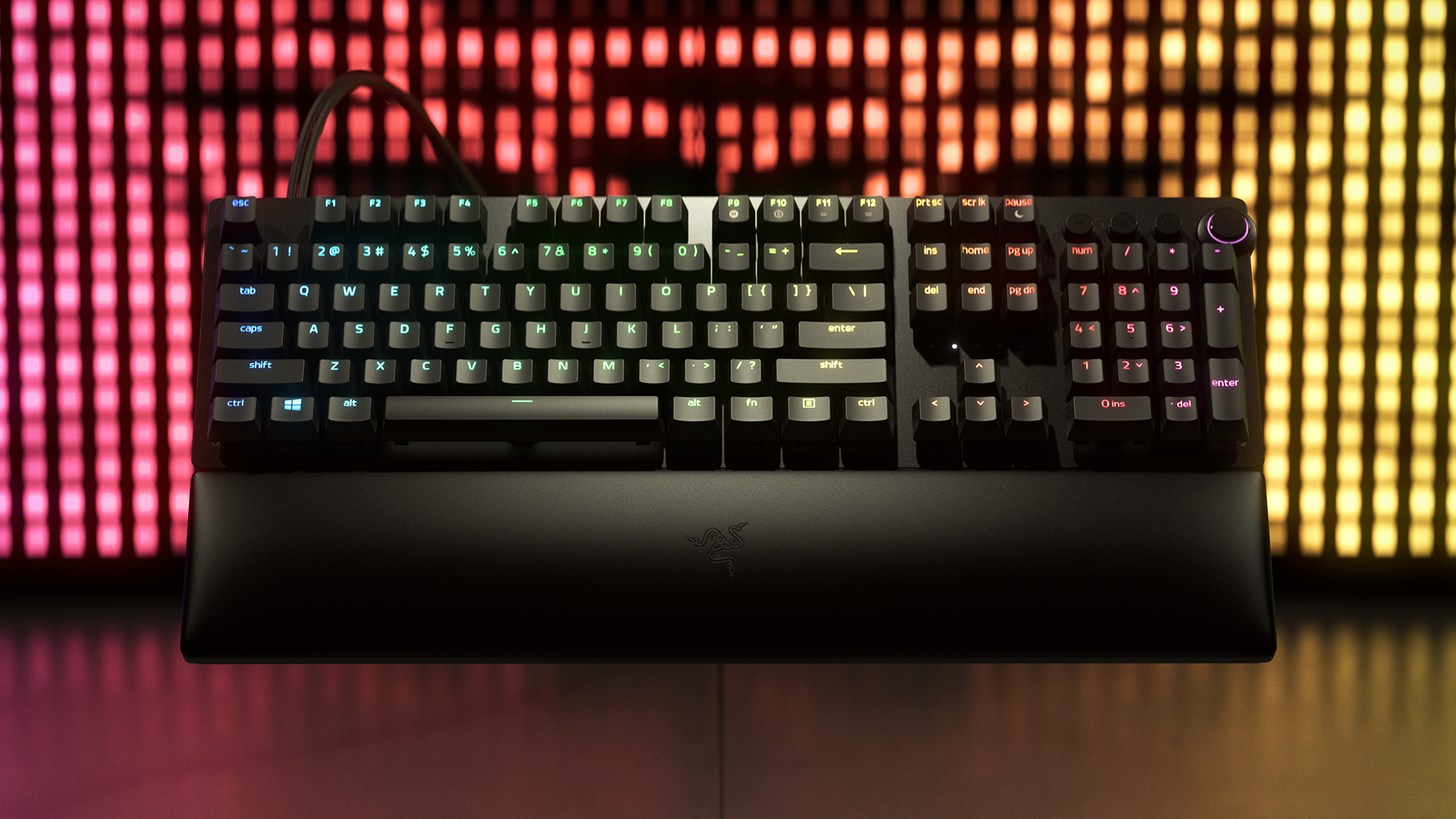Tom's Guide Verdict
The Razer Huntsman V2 Analog is arguably the most innovative gaming keyboard in years, but its price limits it to a niche audience.
Pros
- +
Innovative actuation features
- +
Gorgeous design
- +
Great performance
- +
Pretty RGB lighting
Cons
- -
Keys feel stiff
- -
Inconsistent software
Why you can trust Tom's Guide
The Razer Huntsman V2 Analog demonstrates that gaming keyboards still have new ground to cover — even if not everyone is going to want to follow this particular trail. This innovative peripheral does something I've rarely seen before: It gives each key its own programmable actuation point. This means that you have more than 100 opportunities to customize your keyboard on a physical level, in addition to plenty of software and lighting options.
It also means that you'll have to pay prettily for the privilege. The Huntsman V2 Analog costs $250. That's $110 more than Razer's excellent BlackWidow V3, and the same price as Logitech's wireless masterpiece, the G915.The ability to program every key's sensitivity is a very cool feature, and will surely appeal to a very specific demographic of keyboard fans.
- Play with the best gaming keyboards
- Pair your keyboard with the best gaming mouse
On the other hand, per-key actuation is one of those features that you'll either love or ignore — and if you ignore it, the Huntsman V2 Analog's asking price is difficult to justify. And no matter how you program them, the keys simply don't feel as good as some of Razer's optical-mechanical or purely mechanical switches.
Still, if you've dreamed about per-key actuation and the SteelSeries Apex Pro made too many compromises, the Huntsman V2 Analog might be one of the best gaming keyboards for your setup. Read our full Razer Huntsman V2 Analog review to learn more.
Key Type: Optical
Switch Type: Razer Analog Optical
Illumination: Full RGB
Size: 17.5 x 5.5 x 0.9 inches
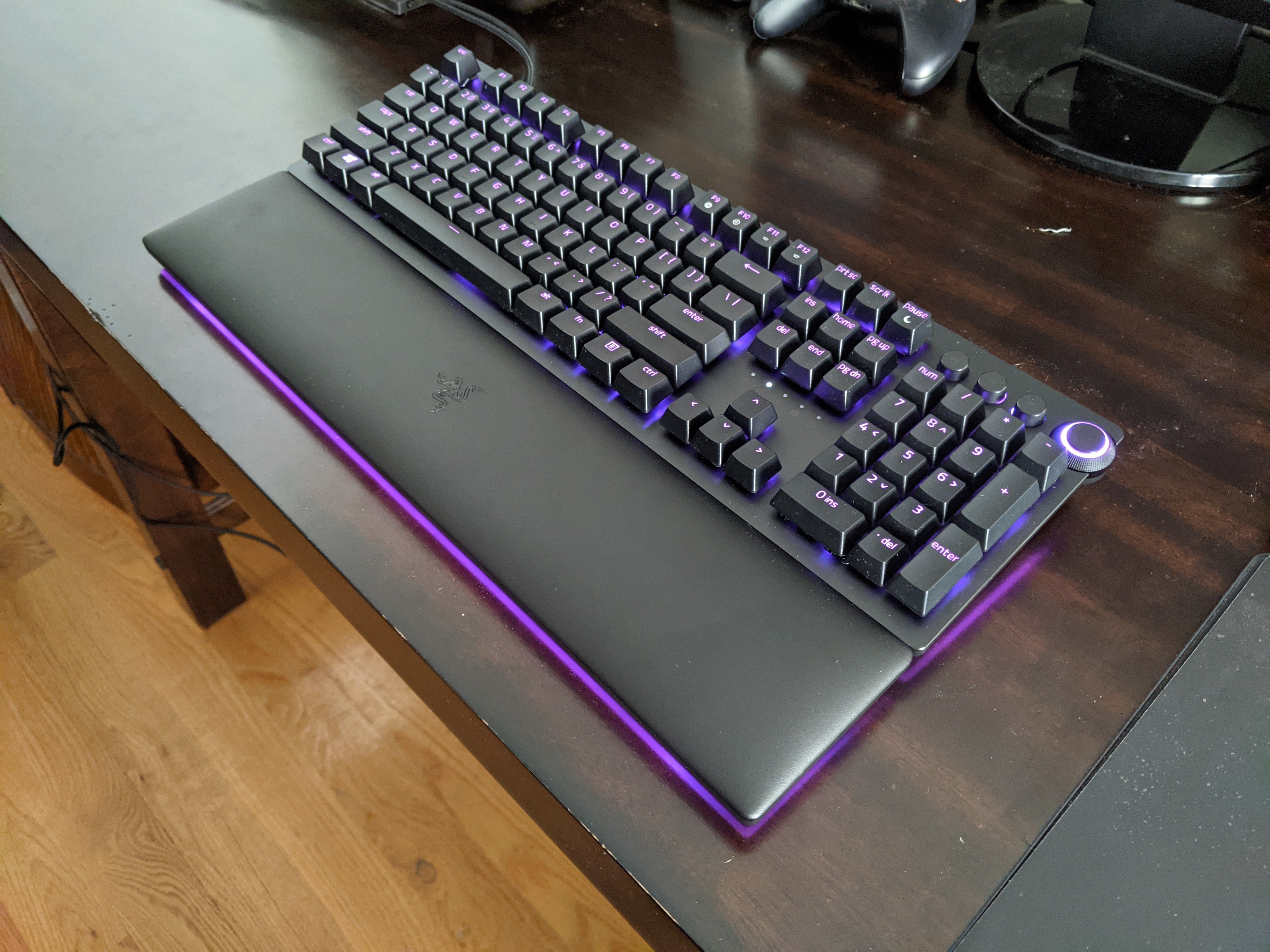
Razer Huntsman V2 Analog review: Design
Like the Razer BlackWidow Elite, the Razer Huntsman V2 Analog crams a lot of functionality into a reasonable amount of space. At 17.5 x 5.5 x 0.9 inches (without the wrist rest), the keyboard keeps bezels to a minimum without making the keys feel cramped. The plain black plastic chassis won't turn any heads, but it also looks good with just about any gaming setup — or any office space. Per-key actuation has some productivity purposes, too.
Back when Razer debuted the Huntsman line, one of my favorite features was the discrete media bar in the upper-right corner, and the Analog continues that proud tradition. You get three circular buttons: rewind, play/pause and fast-forward. You also get a volume dial with a handsome LED strip. I wish the symbols on the three circular buttons were clearer, but the design is striking, either way.
The wrist rest is also worth a mention, as it's plush, comfortable and connected magnetically to the rest of the keyboard. It has a tasteful LED strip running along the bottom, giving some extra space to customize RGB effects.
My only real issue here is with how Razer handled cable management. The Huntsman V2 Analog has two USB connections: one for keyboard functionality and one for a USB passthrough. However, both cables originate on the left side of the keyboard, and there's no way to route them underneath the device. This might work for your setup; it made a real tangle in mine.
One cable connects via USB-A, while the other connects via USB-C, which seems inconsistent. (The keyboard does include an adapter, if your system doesn't have USB-C ports available.) I asked Razer about this design decision, and a representative replied that the company is working to include more USB-C options. But since not every user has access to USB-C ports yet, it's not possible to make a complete changeover.
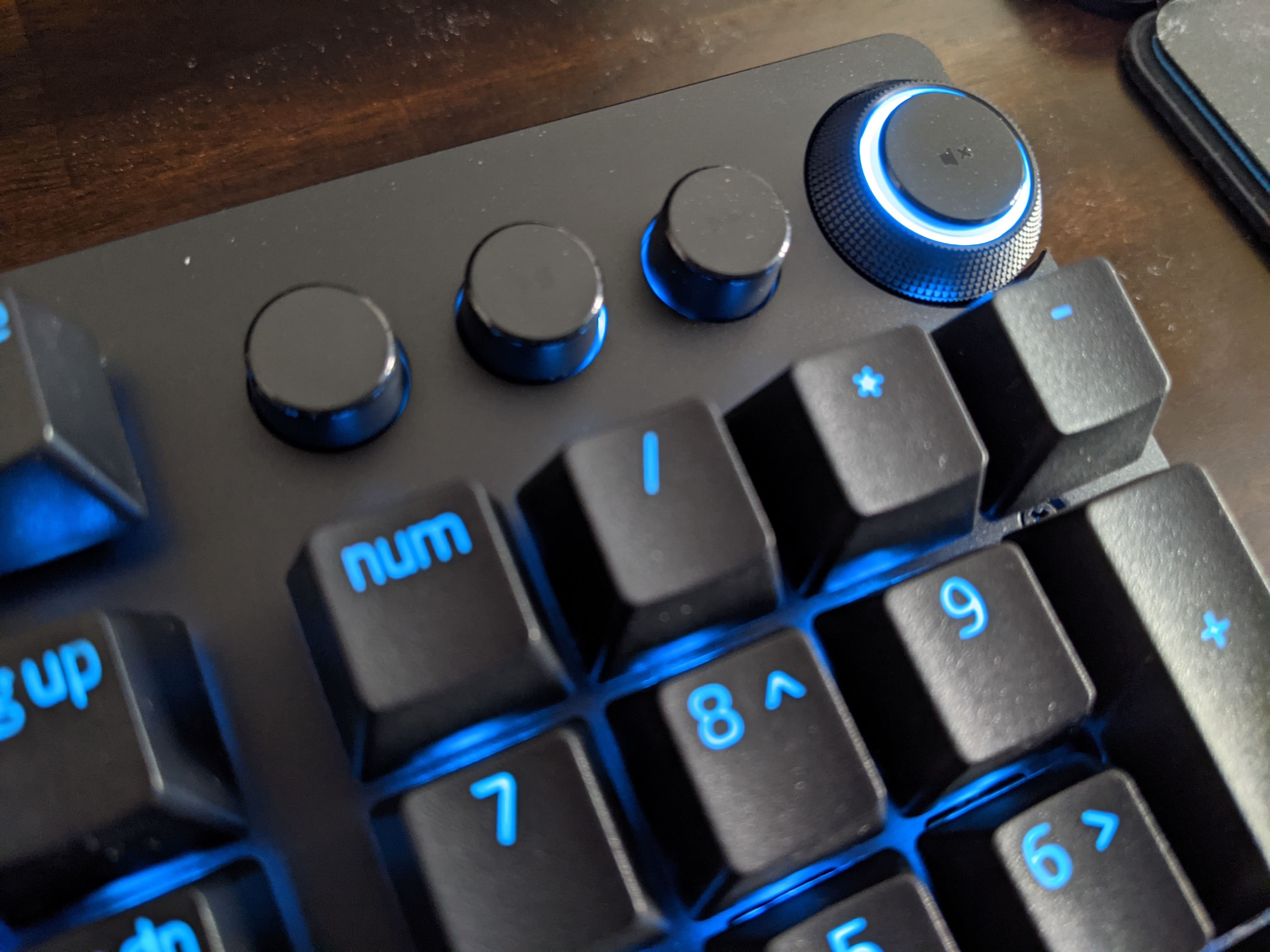
Razer Huntsman V2 Analog review: Keys
The keys are the real star of the show on the Razer Huntsman V2 Analog — or, more accurately, the key switches are. Like other Razer Huntsman models, the Analog uses optical switches. I gave a more detailed explanation of how these switches work in my Razer Huntsman Elite review, but to recap briefly: Optical switches work via light rather than mechanical action.
These keys still have mechanical switches, but they're purely for feel; the switch activates when light is present, and stays dormant when light is not present. In theory, this provides faster, more accurate signals, which results in faster, more accurate keystrokes. In practice, light still travels an awful lot faster than a human finger, so your exact results may vary.
What's new about the Huntsman V2 Analog switches is that they're fully adjustable. By using the Razer Synapse software, you can program the keys to actuate at any level between 1.5 mm and 3.6 mm. And you can do this for every key individually. To calculate how many millions of possible configurations you could come up with is beyond the scope of this review; suffice it to say, it's a lot.
I'll get into the practical uses for this feature later, but it's an incredibly impressive technology. That's particularly true when you consider that you can adjust this physical feature via digital software.
The downside, though, is that the keys simply don't feel as refined as those Razer's more traditional switches. The keys are loud and a little stiff, regardless of how low you set the actuation. Even with the actuation set at 1.5 mm on every key, my typing speed measured 109 words per minute with 97% accuracy. Compare and contrast to 125 wpm with 99% accuracy on my Logitech G915, which has much smoother key switches.
In other words: If there's a style of mechanical key switch you already know you like (linear, quiet tactile, loud tactile — all of which Razer makes), you might just want to stick with it and save yourself a lot of money in the process.
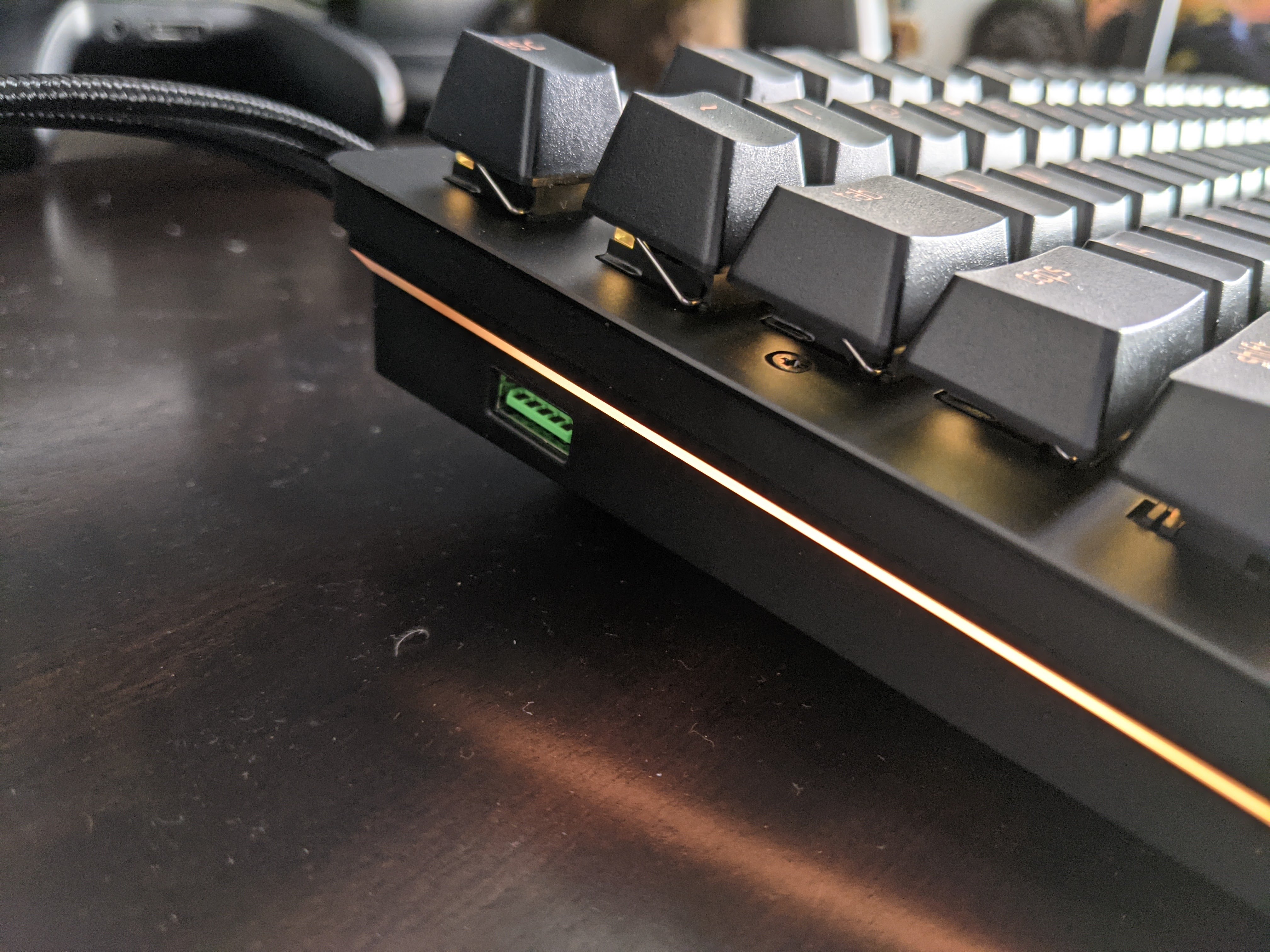
Razer Huntsman V2 Analog review: Features
To manipulate the key actuation and RGB lighting on the Razer Huntsman V2 Analog, you'll use the Razer Synapse software. In previous Razer reviews, I've both praised Synapse for its myriad features and criticized it for its inconsistent performance. For the Huntsman V2 Analog, the Synapse software is occasionally quite helpful, and occasionally a mess.
For example: Adjusting RGB lighting (with a variety of prebuilt patterns) and setting up individual profiles for games and programs are both easy to do. You can reprogram any key you like, which is especially helpful as the Huntsman V2 Analog has no extra macro keys. You can even sync Synapse with complex lighting apps from third parties that take full advantage of the keyboard's extensive RGB features.
But when it comes to adjusting per-key actuation, the Huntsman V2 Analog is not nearly as straightforward as it could be. Sometimes, I would click on a key, select an actuation point, click "Save," and be done with it. Other times, Synapse refused to acknowledge the "Save" command, and also refused to let me navigate away from the actuation menu, trapping me in a loop that required shutting down the program to fix.
I also wish there were a simpler way to program actuation points for multiple keys at once. I had wanted the WASD keys to actuate at one point, and the number keys to actuate at a different point, to improve my MMO gameplay. But at present, Synapse lets you modify one key at a time, or apply your changes to the entire keyboard. There's are no group selection or key cluster tools. These would be extremely helpful.
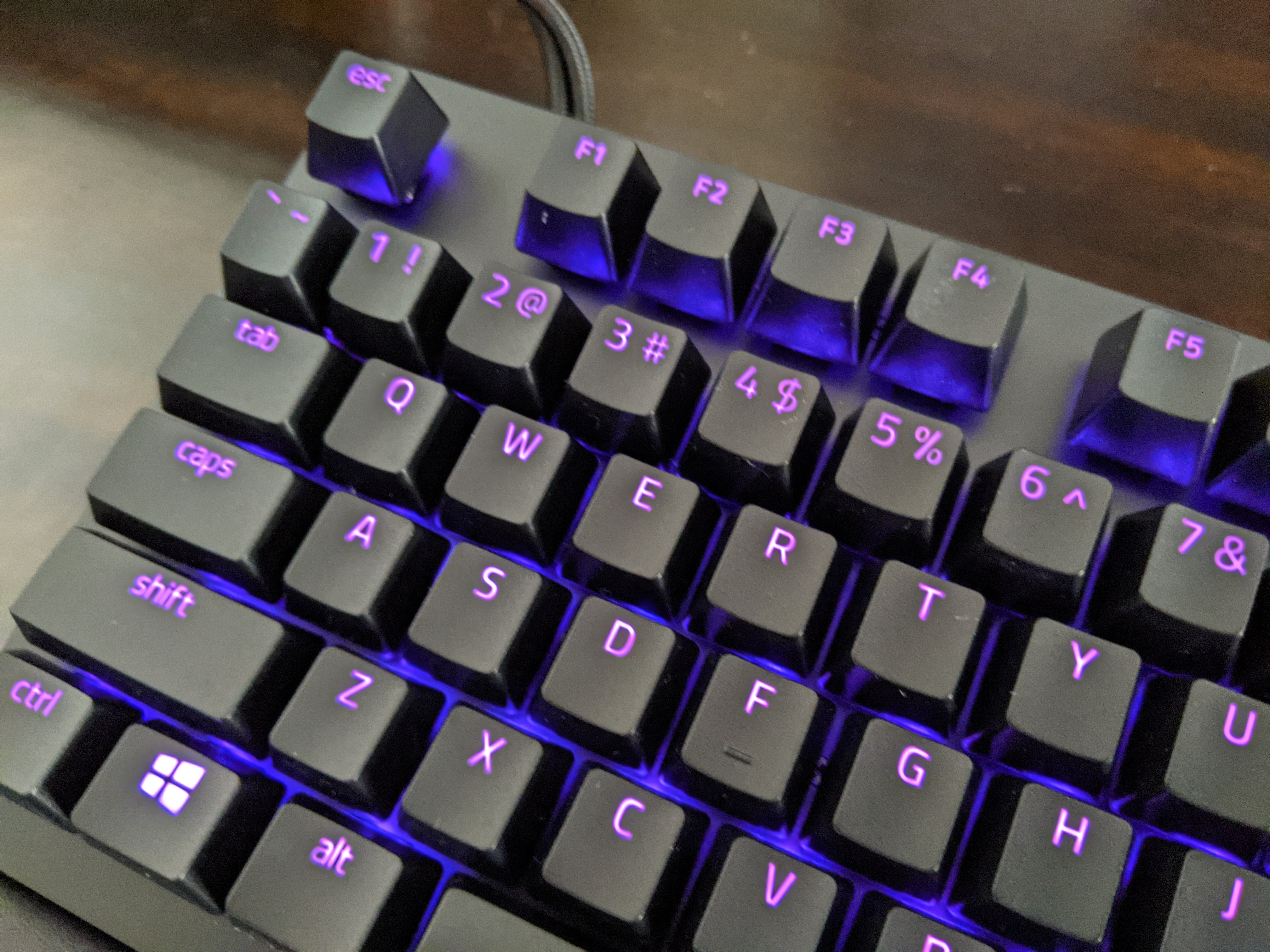
Razer Huntsman V2 Analog review: Performance
One area where Razer seldom disappoints is in its game performance. The Razer Huntsman V2 Analog works beautifully across a variety of game genres — particularly if you take some time to fine-tune your actuation beforehand.
I had a chance to experiment with this feature the most in Final Fantasy XIV. In this MMO, movement and repeatable skills are key to combat. As such, the most important keys are the WASD cluster, as well as the number keys, particularly 1-5. I turned actuation for the number keys as far down as they would go (1.5 mm), while turning actuation for the WASD keys all the way up (3.6 mm). This way, I could hammer my skills repeatedly, but make sure my movements to avoid enemy attacks were deliberate and purposeful. The per-key actuation worked beautifully, and made FFXIV just a little bit easier to control.
I also ran the device through Doom Eternal, Age of Empires III: Definitive Edition and Control, just to confirm that it handles other genres well. I didn't play around as much with per-key actuation, but I see how it could potentially be helpful in shooters — particularly since you can actually add a second function to each key at a certain actuation point. For example, you could program a key to draw a grenade out of your inventory at 1.5 mm, but not actually throw it until 3.0 mm. It'd be a very subtle difference, admittedly, but it could also come in handy for extremely high-level competitive multiplayer. (Just bear in mind that you need the Synapse software to make this work.)
Per-key actuation added some small, helpful touches to my games. Whether they actually enhanced the overall experience is a fair question, though. After I finished testing the Huntsman V2 Analog, I played some more FFXIV with my regular G915, and didn't really miss the varied actuation points. This may be something best-suited to players who demand a truly exacting level of control.
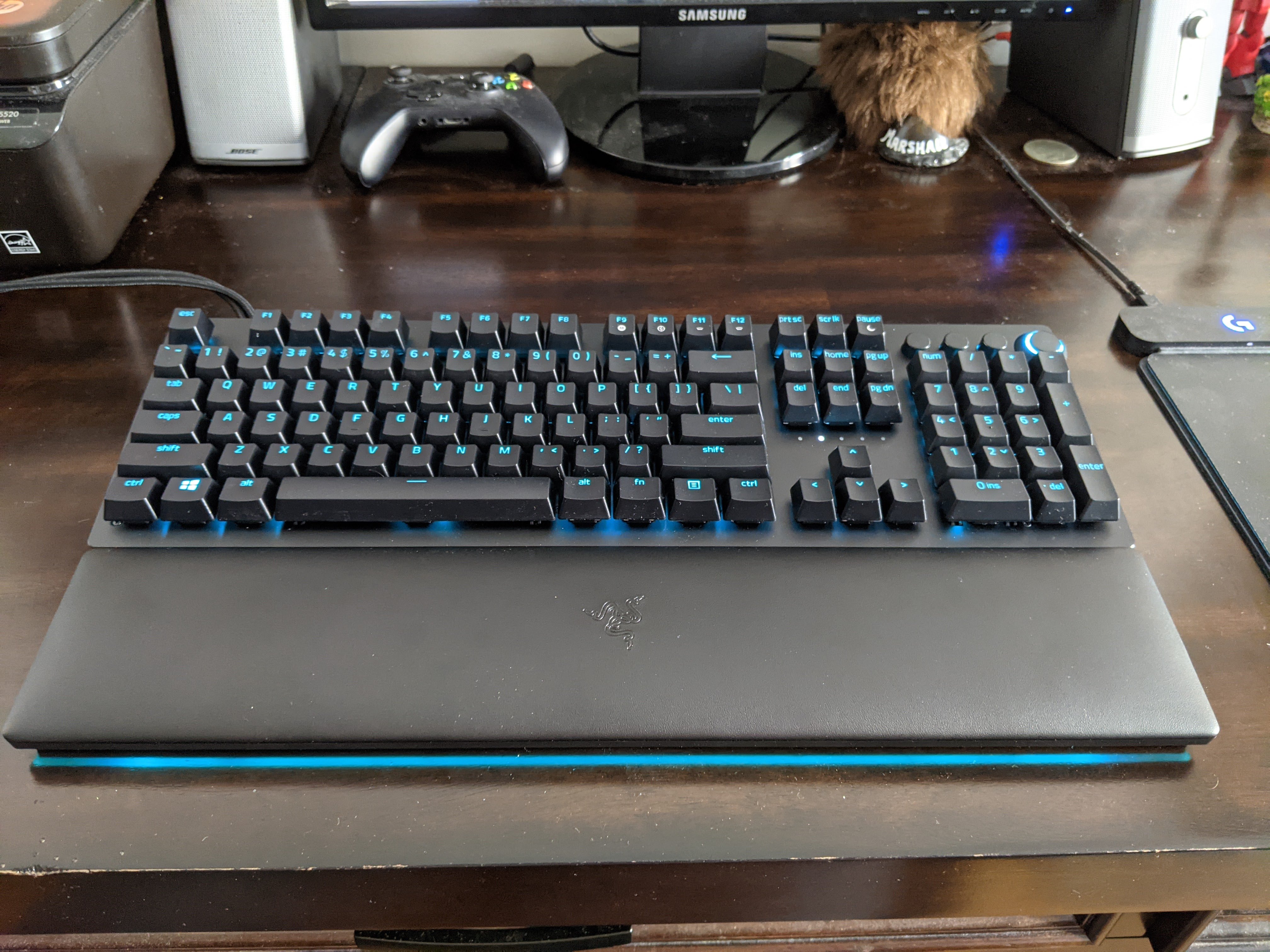
Razer Huntsman V2 Analog review: Verdict
There's no denying that the Razer Huntsman V2 Analog offers a fairly niche selling point. Per-key actuation isn't at the top of every gamer's wish list, particularly if they have to pay $250 for the functionality. But the feature is still innovative and potentially useful — and the Huntsman V2 Analog pulls it off much better than the aforementioned Apex Pro.
Still, the Apex Pro costs only $200 and offers similar functionality overall, so it's still worth considering. Likewise, if you have $250 to spend on a keyboard, I personally found the wireless features on the G915 more valuable than the per-key actuation on the Huntsman V2 Analog. Your preferences may vary.
If you do go with the Huntsman V2 Analog, though, rest assured that you're getting a high-quality product with a feature that very few other keyboards possess. It might not change every single gaming session dramatically — but it also might just deliver where it counts.
- Razer Huntsman Tournament Edition Review: Lightweight and Lightspeed
Marshall Honorof is a senior editor for Tom's Guide, overseeing the site's coverage of gaming hardware and software. He comes from a science writing background, having studied paleomammalogy, biological anthropology, and the history of science and technology. After hours, you can find him practicing taekwondo or doing deep dives on classic sci-fi.
